Rothera Time-series
The Rothera Oceanographic and Biological Time Series (RaTS) started in 1997, operating out of the British Antarctic Survey (BAS) research station at Rothera Point on Adelaide Island, close to the southern end of the Pal-LTER sampling grid. RaTS is centred on Ryder Bay, a small embayment close to Rothera. The ethos of RaTS is to make high-frequency, year-round observations with which to answer a number of scientific questions relating to the physical and biological marine environments, their evolution over time, and their interactions with the atmosphere and cryosphere.
The specific aims of RaTS are:
- To document the seasonal pattern of sea ice, temperature, salinity, chlorophyll, pH and macronutrients (N, P, Si) in the water column close to the Antarctic Peninsula.
- To quantify the extent of interannual variability and long-term change in physical and biological oceanography close to the Peninsula, particularly in relation to large-scale forcing by factors such as El Niño and the Southern Annular Mode, and in response to decadal climatic change.
- To relate seasonal and interannual variability in the feeding activity of selected benthic suspension feeders to variability in the physical environment.
- To quantify interannual variability in the reproductive biology of selected marine invertebrates, and relate this where possible to variability in the environment.
In addition, RaTS provides the infrastructure and scientific context for a number of shorter-duration projects, with specific goals that relate to seasonal and interannual change in the Antarctic marine environment. In this context, collaborative activities have recently led to measurements at RaTS of trace metals, dissolved iodine speciation, carbonate system parameters, microbial communities, viruses, and so on.
RaTS and Palmer LTER
In 2003, BAS and NSF signed a Memorandum of Understanding to structure and promote collaborative working between Palmer LTER and RaTS. As part of this collaboration, Pal-LTER scientists visit Rothera each year for joint sampling, intercomparison of techniques, and cross-calibration of equipment. RaTS/Pal-LTER interaction is being further strengthened by the acquisition by BAS of two Webb Slocum gliders, to be flown from Rothera. These will enhance the range of glider operations achievable from Palmer, and allow routine oceanographic mapping of nearly the whole WAP shelf. BAS scientists have participated in Pal-LTER meetings since 1996, and in 2011 will be hosting a joint RaTS/Pal-LTER workshop in Cambridge, U.K.
RaTS Participants
- Mike Meredith (Project Leader)
- Hugh Venables (Project Manager)
- Andy Clarke
- Simon Reeves
- David Barnes
- Lloyd Peck
- Helen Peat
Selected Publications
- Meredith, M.P., M.I. Wallace, S.E. Stammerjohn, I.A. Renfrew, A. Clarke, H.J. Venables, D.R. Shoosmith, T. Souster and M.J. Leng. Changes in the freshwater composition of the upper ocean west of the Antarctic Peninsula during the first decade of the 21st century. Progress in Oceanography, 87, 127-143, 2010.
- Clarke, A., M. P. Meredith, M. I. Wallace, M. A. Brandon, and D. N. Thomas. Seasonal and interannual variability in temperature, chlorophyll and macronutrients in northern Marguerite Bay, Antarctica. Deep-Sea Research, Part II, 55, 18-19, 1988-2006, 2008.
- Meredith, M.P., and J.C. King. 2005. Rapid climate change in the ocean west of the Antarctic Peninsula during the second half of the 20th century. Geophysical Research Letters, 32, L19604, doi:10.1029/2005GL024042
- Meredith, M.P., I.A. Renfrew, A. Clarke, J. C. King, and M. A. Brandon. 2004. Impact of the 1997/98 ENSO on upper ocean characteristics in Marguerite Bay, western Antarctic Peninsula. Journal of Geophysical Research 109:C09013.
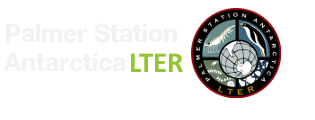
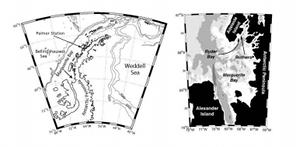
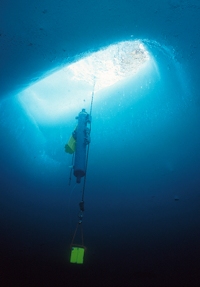

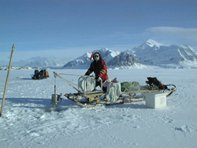
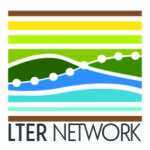
 This site was developed with the support of the National Science Foundation under Grant No. OPP-2224611 and OPP-2026045. Any opinions, findings, and conclusions or recommendations expressed in this material are those of the authors and do not necessarily reflect the views of the National Science Foundation.
This site was developed with the support of the National Science Foundation under Grant No. OPP-2224611 and OPP-2026045. Any opinions, findings, and conclusions or recommendations expressed in this material are those of the authors and do not necessarily reflect the views of the National Science Foundation.